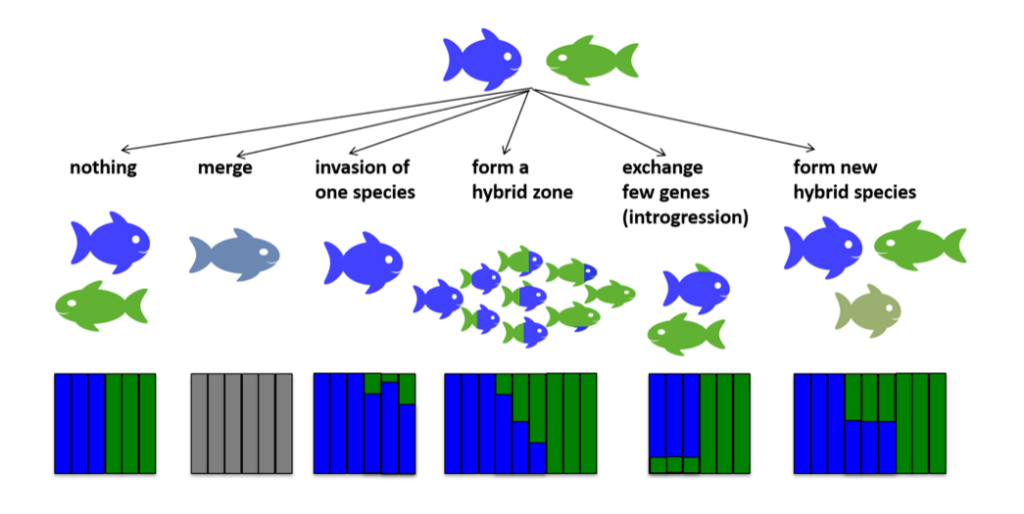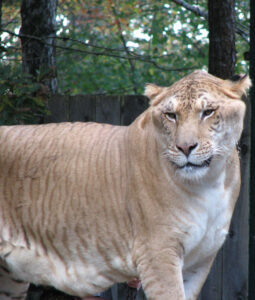Hybridization and Introgression
Hybridization refers to the interbreeding of individuals from two different species or genetically distinct populations, resulting in offspring called hybrids. This process is a naturally occurring phenomenon that has significant implications for the evolutionary trajectory of species. Hybrids can display characteristics that are intermediate between their parent species or, in some cases, traits that surpass those of either parent, a phenomenon known as hybrid vigor or heterosis. An example of natural hybridization occurs between polar bears (Ursus maritimus) and grizzly bears (Ursus arctos). Their hybrids, known as pizzly or grolar bears, exhibit a combination of physical and behavioral traits from both species. The increasing frequency of these hybrids is attributed to climate change, which causes overlapping ranges as polar bears are forced southward.
Evolutionary Outcomes of Hybridization
The evolutionary outcomes of hybridization are varied and complex, impacting genetic diversity and biodiversity in different ways:
- Loss of Genetic Diversity: When hybridization occurs between a rare species and a more common one, the gene pool of the rare species may be swamped, potentially leading to genetic homogenization and loss of unique genetic diversity. This process, called introgression, can dilute the distinct genetic identity of the rare species and pose a risk of extinction.
- Gain of Genetic Diversity: Conversely, hybridization can introduce new genetic variations into populations. These novel combinations of genes can sometimes confer adaptive advantages, enabling hybrids to exploit new ecological niches or adapt to changing environmental conditions. This process can lead to the emergence of new hybrid species that are reproductively isolated from their parent species.
- Maintenance of Hybrid Zones: Hybridization can result in the creation of stable hybrid zones, regions where hybrids persist over generations due to ongoing gene flow between parent populations. These zones can act as laboratories of evolution, where the dynamics of genetic mixing and selection provide insights into speciation processes.

Case Study: Ligers!
Ligers are the hybrid offspring of a male lion (Panthera leo) and a female tiger (Panthera tigris). These hybrids are known for their extraordinary size, often surpassing both parent species in weight and height. This size is attributed to a phenomenon known as “hybrid vigor” or heterosis, where the hybrid exhibits traits that are superior to either of the parent species, in this case, in terms of growth. Ligers exhibit a blend of physical features from both lions and tigers: they may have a faint striped pattern on a tawny background and sometimes display a mane, albeit less pronounced than that of a lion. Ligers are sterile in most cases, especially the males. This sterility means that these hybrids cannot contribute to the gene pool, leading to a dead-end in terms of genetic lineage. Therefore, while they are a fascinating example of interspecies hybridization, they do not contribute to the genetic diversity of either parent species. Alternatively, although ligers themselves do not contribute to genetic diversity due to their typical sterility, the concept of hybrid vigor observed in ligers shows how hybridization can potentially introduce beneficial traits. In a natural setting, if similar hybrids were fertile, these traits could be passed on, leading to increased genetic variation and potentially new adaptations within a population.

THINK/PAIR/SHARE
Media Attributions
- outcome of hybridization © Annarunemark is licensed under a CC BY-SA (Attribution ShareAlike) license
- liger © Ali West is licensed under a CC BY (Attribution) license

